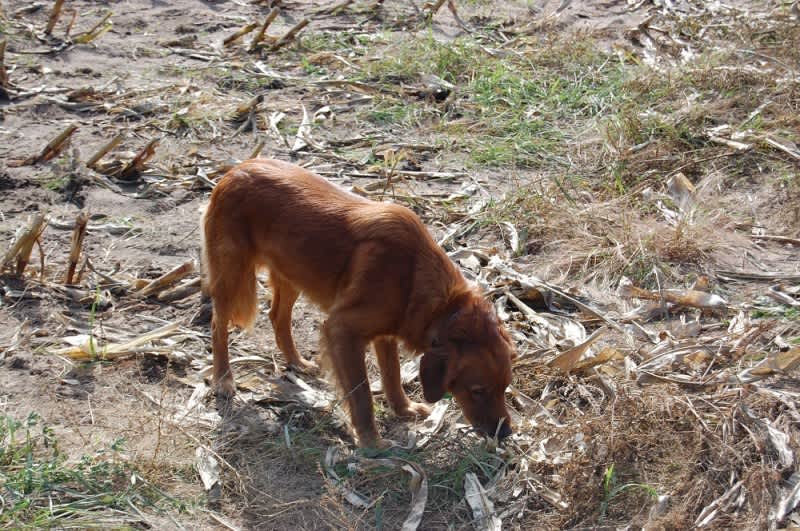Retriever Rehab
Hard Core Decoys 02.15.13

It was a nightmare scenario for a hunting dog owner. The local festival fireworks display sent cannon-like reports thundering through the small town, loud enough to shake houses and knock picture off walls. It was also loud enough to scare dogs, including a tolling retriever named Kenai near and dear to my family’s heart.
Since that night, any loud sound has the dog scared out of her mind. It didn’t take long to find out that this included gun shots. Until this point, the young dog was doing quite well with her retrieves and she loved hunting. Now the house of cards had crumbled. She didn’t like loud noises. Would she associate retrieving with hunting and loud noises? Would she ever go hunting again?
I had an idea where to go for help. Tom Dokken, maker of the Deadfowl training aid and noted retriever trainer and dog expert, is an old friend. His book, Tom Dokken’s Retriever Training, was the basis of how I had trained the dog from the start. If anyone would know what to do with a suddenly gun-shy dog, Tom would.
“Oh man, you’ve got a problem there,” Dokken said. “It’s going to take time and patience because you’ve got to rehab your retriever to not only not be scared of the loud sounds again, but to also associate them with something she enjoys. This is going to be a tough one.”
Our first step was working with the noise. At Dokken’s suggestion, when Kenai was eating, I started clapping behind her. This progressed to banging pots and pans together behind her. She never flinched.
“The key,” Dokken said, “is to get the dog to hear the sound and become happy. Feeding time is a good place to start. You want to build her up so that she doesn’t even notice the noises.”
It didn’t take as long as I thought it would. The only issue we encountered during this time was explaining to the kids what we were doing. Our daughter, who’s two, didn’t quite understand that it was OK for daddy to bang pots and pans together, but not her. It might have actually helped with the dog’s rehab, but I had a few extra headaches and the kid’s cat is now jittery.

With the dog on the road to recovery, we moved things outside. We got the dog doing some basic retrieves with a tennis ball–just throwing it and having fun. We then added in clapping while she ran to the ball. From there we would clap loudly and then throw the ball. Over the course of a few weeks, this went very well. We progressed to louder noises and added in using her training bumper and a few runs into a pond for water retrieves. Those didn’t go as well, but it’s a start.
“You have to build the dog’s confidence back up,” Dokken said. “Use a lot of positive reinforcement. You’re going to be part trainer, part therapist. If it doesn’t go as smooth as you’d like at first, always keep your enthusiasm up. The dog can sense that.”
In keeping things going in a positive direction, we also added in some upland hunting activities. The dog loves chasing rabbits and grouse in the thick woods. Like with the other activities, we started her with no noises and then added in some claps, bangs, thumps, and whatever else we could make noise with before we finally started shooting guns.
When we started shooting guns around her, we actually started by not shooting them anywhere near her. One thing we avoided was having her in her crate. Originally, she went into the crate and was comfortable and safe. This could have been a great place for her to be when we started shooting guns around her. However, she was in her crate during the fireworks. It took us a month to get her to go back into the crate as it was. This was definitely not the place to have her during our rehab sessions.
We still have a long way to go, but I think she’s headed in the right direction. Will she ever be a stable hunting retriever again? I think so. If there are setbacks along the way, Dokken said it is OK to go back some, but try to not let things fall apart all the way. The dog wants to work. It’s genetic. We just have to overcome that one thing blocking them mentally from doing what they love.
If you get into a similar situation, there is hope. Start with small steps and build your dog’s confidence back up slowly. Trying to go too fast can make matters worse, Dokken said. A slow, steady rehab program can cure a lot of issues, both big and small. I’m hoping to have my dog back out on a few hunts this coming fall. I’ll let you know how that goes.

